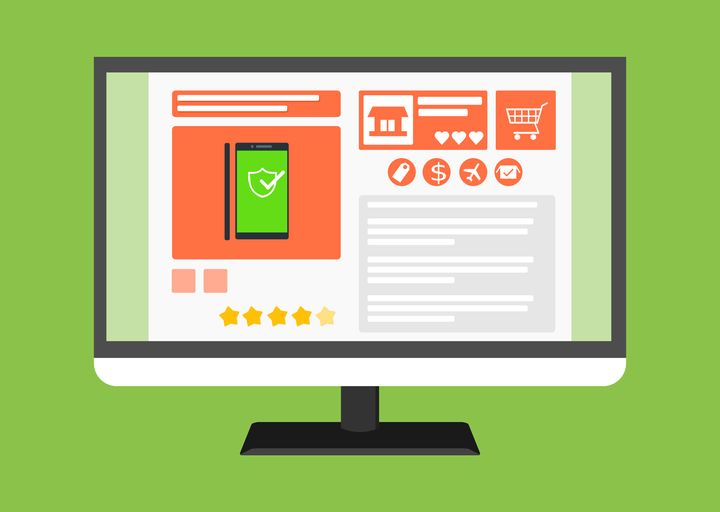
Even if you have strategies in place to get visitors to your business website, that is by no means a guarantee that anyone will ever actually follow up on your call to action and purchase a product or call you for service. As consumers grow ever savvier in their online endeavors, they're also becoming more accustomed to efficiency and accessibility.
That being said, they are not going to put up with things consumers would have been fine with a decade or even five years ago. The following are some of the more common reasons why your site probably isn't converting:
1. Customers (Literally) Can't Find You
If your website is in support of a physical storefront or service shop but the site doesn't have a map integrated somehow, the purpose of your business having a website in the first place gets heavily undermined. Without the location mapped out for potential customers, the site merely exists as a billboard that says, "This business exists," but not much more. Considering how easy it is to embed a map, at least add a small one to your contact page and call it a day.
Worse than no on-page map is if your business doesn't show up on the map's results pages when people search for your type of company. Even for businesses that don't need customers to come through their doors, appearing on a map helps legitimize your business and offers you cheap, if not free, exposure.
2. Google Doesn't Like Your Site
As a business owner with a website, you have likely already heard of the term "SEO", which stands for Search Engine Optimization. In essence, the actions taken for SEO are done to make search engines - particularly Google - take notice of and rank a site higher on search engine results pages. However, just as there are a ton of methods used to make sites rank well, there are countless things that will keep your site from ever being seen by someone searching for whatever it is that you sell.
If you do things wrong, whether purposefully or unintentionally, your site can also receive penalties that range from poor rankings to complete blacklisting. Even things done to your site that revolve around the images used can lead to being blocked, including the use of misleading download buttons or other practices aimed at tricking people or being deceptive in nature.
3. The Site's Layout is Unintuitive
If visitors to your site just can't find what they're looking for, they will simply go to a competitor's site to conduct their business. There are a handful of ways that a site's layout can be a turnoff to visitors. These include the likes of overly-busy design elements, products not being placed well categorically, or a poorly-crafted menu system.
When this kind of problem plagues your business's website, you can end up suffering in a very specific way. Potential customers will get frustrated by the unintuitive layout and leave without making a purchase or contacting you, nor will you ever be able to capitalize on their return or word-of-mouth business. While there are some decent guides on creating intuitive site navigation, you might be better off just asking colleagues, friends and family members to browse your site for a few minutes to see if your site makes sense.
4. No Ability to Filter Products
If you've ever browsed through Amazon.com, you have probably noticed the ecommerce giant's huge list of filtering options on the site of the page. Those filters help customers to narrow their results from a search and find a product that meets their needs and budget in minimal time. While it's not expected that small businesses have filters up to that level, not having filters at all will mean losing a lot of your potential customers
At the very least, a site that sells more than a page worth of products should offer the ability to resort product listings by price. Otherwise, people won't necessarily see a bargain that catches their eye and, again, you've lost even more visitors. The good news here is that many shopping add-ons for site-building content management systems like WordPress and Joomla will have some level of filtering already implemented, so just be sure not to turn it off before making a site live.
5. Customers Can't See Prices
Unless dealing with the hyper wealthy or you offer a service that requires individual estimates on a per-job basis, people want to see the prices of products before they buy them online. Just like you wouldn't put an item in your shopping cart while out shopping, your online customers feel the same way while browsing your ecommerce site. Tell them how much they'll have to pay for the item and they'll be that much more likely to throw (click) an item into their (digital) shopping carts.
Note: There are a handful of caveats to this, but they are few and far between to the point that most sites shouldn't hide prices.
6. Your Site is Ugly (But Looks aren't Everything)
If your site is unattractive or poorly designed, that isn't necessarily going to translate into lost customers. However, if your site is ugly and it doesn't have any semblance of theme or branding, customers have a very hard time taking your business seriously.
This should not be taken as though everything on a website has to be absolutely uniform or perfectly matched, but a loss of continuity on a site where people are about to enter their credit card numbers will quickly question your legitimacy if you don't even have a semblance of branding that follows them from page to page. That small amount of perceived professionalism can go a long way in converting more sales, which is also a good reason to proofread your site's content.
7. Too Many Steps at Checkout
Just because you get a customer to put an item in the site's shopping cart doesn't mean you're off the hook. Every page customers have to go through to verify shipping, input payment info, make selections about delivery date and agree to terms they're not going read anyway means a growing chance they're just going to abandon the purchase altogether.
If it's imperative that your ecommerce site collects all that information, do what you can to get it all to fit on one page. Likewise, instead of a full page asking for the customer to verify their purchase, use an in-page popup if you can to minimize the time they have to back out of the sale.
